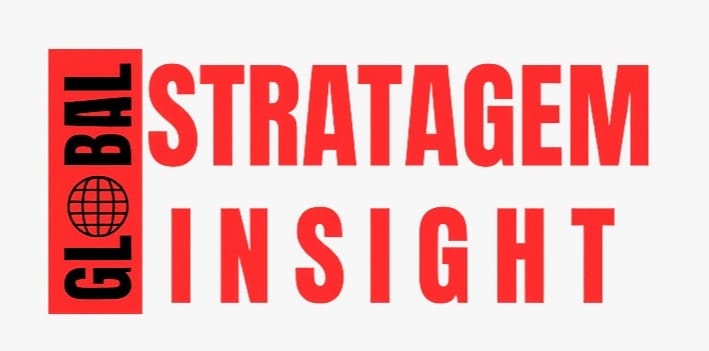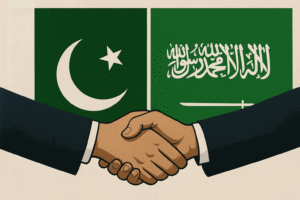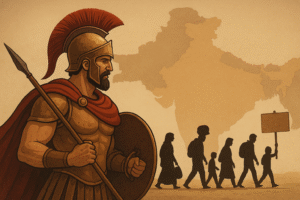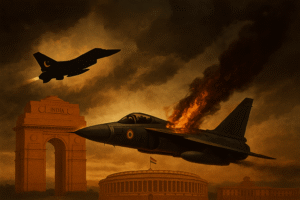Global Stability Undermined: War Escalation and Diplomatic Fractures
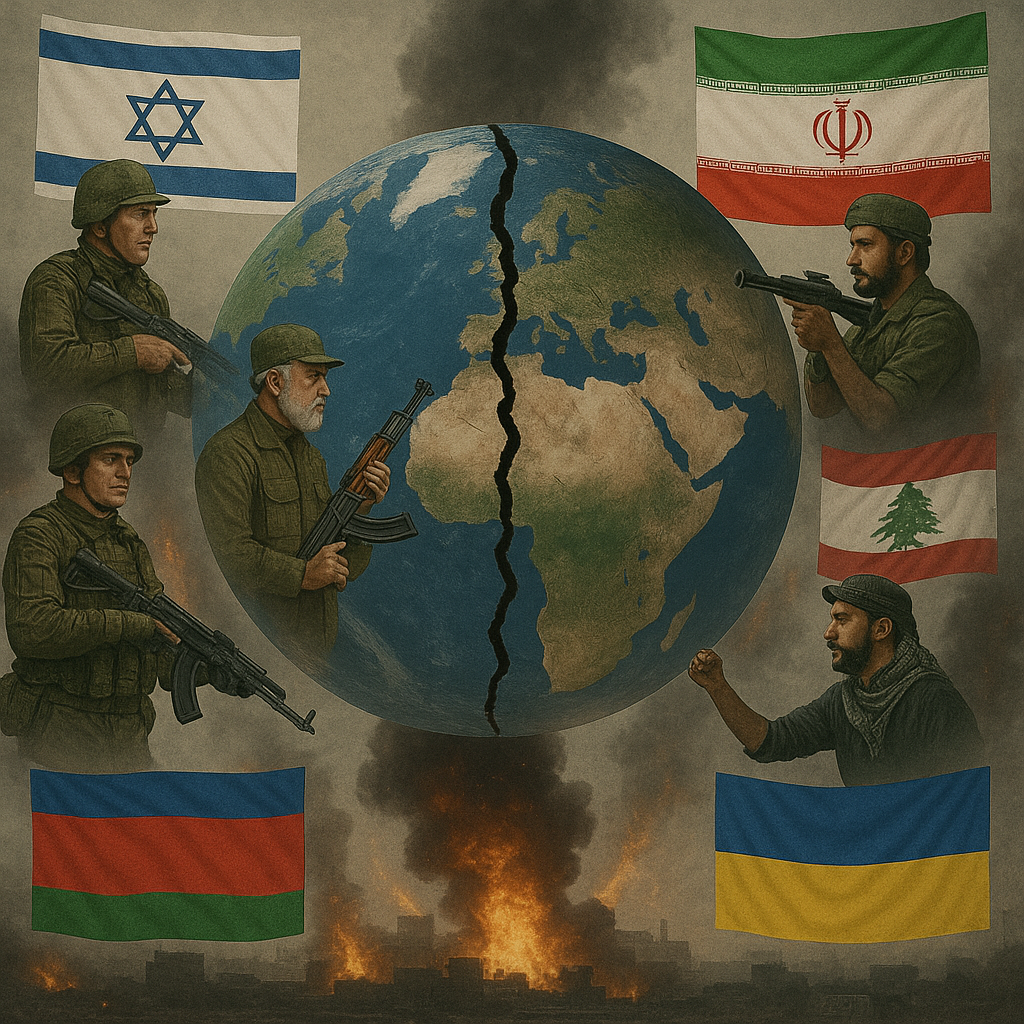
The fractured world order: From Eastern Europe to the Middle East, escalating wars deepen global instability.
The world is gripped by fear and worry. We’re already suffering from the long, harsh Russia-Ukraine war, the brutal Israel-Gaza war, and the recent clashes between Pakistan and India. Now, suddenly, direct fighting has erupted between Israel and Iran, sending shockwaves across the globe and causing terrible problems. These aren’t just separate events; they show a world on the brink. Countries are acting aggressively and looking out only for themselves, pushing the world into a very dangerous state. The idea that global order is stable is simply falling apart.
Before this latest crisis, the world was already struggling. The Russia-Ukraine conflict, which started a while ago, continues to kill many people and force millions to leave their homes. Russian forces are slowly gaining ground, and both sides are losing many soldiers, as seen in recent prisoner exchanges and ongoing battles in June 2025. On top of that, the terrible Israel-Gaza war has been going on for months. It has killed tens of thousands, mostly Palestinian civilians, and destroyed huge parts of Gaza.
This has led to a desperate humanitarian crisis and widespread international anger because of its massive scale. Then, in May 2025, a short but intense conflict broke out between India and Pakistan. It started with a terrorist attack in Kashmir and led to missile strikes and border fights. This showed how unstable that region is, severely hurting trade and diplomatic relations, and almost pushing these two nuclear-armed rivals into a much bigger war before they agreed to a ceasefire.
Now, on June 12-13, 2025, the Middle East has exploded into open warfare. Israel launched “Operation Rising Lion,” a large, high-tech attack on Iran’s nuclear and military sites. They also killed key Iranian leaders. Israel said this attack was necessary to “destroy and remove the threat” of Iran developing nuclear weapons. This move has not only made an already tense regional rivalry much worse but has also deeply challenged the goals of major global leaders, including U.S. President Donald Trump, who said he wanted to be a “peacemaker.”
The economic consequences are already severe. Oil markets are very nervous, and Brent crude oil prices jumped by over 7% right after the Israeli attacks, reaching their highest levels since 2022. There’s a big worry that shipping lanes like the Strait of Hormuz—where about 20% of the world’s oil passes—could be blocked. If this happens, it could cause a huge global economic disaster, making prices go up everywhere and disrupting supply chains worldwide.
Experts say if the conflict continues, oil prices could hit $90 per barrel, with some even suggesting $120. This would mean higher costs for everything from travel to manufacturing, hurting people’s wallets globally. Gold, which people buy when they’re worried about the economy, has also risen sharply. This growing instability forces us to seriously rethink global safety and how countries deal with each other. It paints a grim picture where nations relentlessly seek their own power, ignoring the desperate need for peace and stability around the world.
Israel’s “Iron Fist” Strategy
Israel’s actions that night were a perfect example of its long-standing “escalation dominance” strategy. This isn’t just a military plan; it’s a deep belief that Israel must show overwhelming military strength. This is meant to scare off enemies and deal with threats. “Operation Rising Lion” was a sudden, powerful attack aimed not just at striking back but at “damaging, destroying, and removing the threat” of Iran’s nuclear goals and military power.
The daring and precise nature of the attack were unheard of. Reports say over 200 Israeli aircraft dropped more than 330 bombs on 100 carefully chosen targets. Here’s what they aimed for:
- Nuclear Sites: The Natanz enrichment facility, a key part of Iran’s nuclear program, had its main enrichment plant and related electrical systems destroyed. Reports also suggest attacks on nuclear sites in Esfahan and possibly Fordow, showing a full-scale assault on Iran’s core nuclear facilities. The Israeli military claimed to have killed nine nuclear scientists directly involved in Iran’s alleged weapons program.
- Military Leaders: This was a shockingly effective “decapitation campaign,” meaning they targeted top leaders. Confirmed deaths include IRGC Chief General Hossein Salami, the Iranian Armed Forces’ Chief of Staff General Mohammad Bagheri, and possibly Quds Force Commander Brigadier General Esmail Ghaani, along with other high-ranking commanders and nuclear scientists. These losses are a severe blow to Iran’s ability to command and control its forces.
- Military Buildings: Israeli attacks hit many military bases, including a major missile base in Kermanshah Province, air defense systems, radar stations, and ballistic missile factories. Explosions were also reported near Tehran’s Mehrabad International Airport, which the military uses.
The advanced technology used in the operation was unsettling. Reports mentioned a secret Mossad-operated drone base inside Iranian territory. This base was supposedly used to disable defenses and create “blind spots” for the main air attack. This shows an alarming level of intelligence gathering and technological skill. Prime Minister Benjamin Netanyahu said the operation would last “as many days as it takes,” with initial plans for 14 days of operations. This made it clear that Israel intended a long, overpowering campaign. This firm commitment to dominance, no matter the consequences for the region, directly contributes to the global instability we’re facing.
Iran’s Vicious Counterattack and Internal Struggles
Iran’s response, quickly named “Operation True Promise III,” was immediate and direct. On the evening of June 13, Iran launched a massive attack of over 150 ballistic missiles and more than 100 drones at targets across Israel. While Israel, with help from the U.S., said it shot down most of these, the human cost was clear:
- Casualties in Israel: Sadly, three people were killed and dozens injured in Israel. One woman died from injuries in an early wave of attacks, and two other Israelis died in a later missile strike in central Israel. Some reports suggest up to four deaths and over 200 injured.
- Targets in Israel: Explosions rocked major Israeli cities, including Tel Aviv, Jerusalem, and Ramat Gan. Here, nine buildings were reportedly destroyed and hundreds of apartments and vehicles were damaged.
- Iran’s Serious Warning: In a terrifying escalation, Iran explicitly warned the U.S., UK, and France that if any country helped defend Israel, their military bases and ships in the region would be targeted. This threat directly involves many more international assets in the growing conflict.
On the Iranian side, state media reported terrible civilian deaths from the Israeli attacks. This included 60 people killed in one residential building in Tehran, with 20 children among the dead and 10 more trapped under rubble. Iran’s envoy to the UN stated that the Israeli strikes resulted in 78 deaths and over 320 injuries, mostly civilians.
Despite promises of “historic revenge,” the huge losses among Iran’s top military leaders and how easily Israel seemed to get through their defenses have certainly caused deep internal chaos. This has also led to widespread public doubt about the Iranian government’s ability to protect its assets and its people. This weakness within Iran, which Israel probably considered, makes it harder for Iran to launch a strong and lasting counter-attack. Yet, it also fuels their desperation and the chance of unpredictable actions.
Trump’s “Peacemaker” Claim: US-Israel Tension Laid Bare
This rapidly growing conflict is a huge and undeniable challenge to U.S. President Donald Trump’s stated foreign policy goals for his second term. He returned to office promising to “stop all wars” and to be a “peacemaker and unifier.” But now, he’s overseeing a fiery region with direct U.S. involvement in Israel’s defense. These actions expose a dangerous instability in the relationship between the U.S. and Israel, especially under Trump’s leadership.
- Open Support, Denied Involvement: A Tricky Balancing Act: Trump’s public statements have been full of contradictions. While Secretary of State Marco Rubio quickly said the U.S. wasn’t involved in Israel’s “unilateral action,” Trump himself quickly contradicted this. He admitted knowing beforehand—”It wasn’t a heads-up. It was, we know what’s going on”—and told Iran to “make a deal before there is nothing left.” This clearly shows his quiet, if not open, support. The U.S. did directly help Israel shoot down Iranian missiles, which clearly involves Washington. This mixed message makes Washington’s credibility very shaky and is seen by Iran as complicity. This is not how a true “peacemaker” acts.
- Dividing His Supporters: The “America First” Crack: This conflict has revealed a significant and growing split within Trump’s “America First” base. Important right-wing figures like influential commentator Tucker Carlson, Republican Senator Rand Paul, and Congresswoman Marjorie Taylor Greene are openly questioning endless U.S. support for Israel. They argue it goes against the “America First” idea of avoiding “endless wars.” Trita Parsi of the Quincy Institute notes a “very strong sense of betrayal and anger” among some of Trump’s supporters.
- They believe these wars take away from domestic priorities and hurt Republican presidencies. This internal pressure is a powerful factor that could greatly affect future U.S. foreign policy. As Jon Hoffman of the Cato Institute points out, a recent Pew Research Center survey showed that 50 percent of Republicans under 50 have a “negative view of Israel,” highlighting a wider shift away from automatically supporting military interventions.
- Diplomacy in Ruins: This escalation has severely complicated, if not completely destroyed, the sixth round of U.S.-Iran nuclear talks, which were ironically planned for Sunday in Muscat. The killing of Ali Shamkhani, a key Iranian figure overseeing these very talks, starkly shows how Israel’s attacks directly targeted the diplomatic process itself. Iranian officials now say dialogue is “meaningless.” Despite this, Trump continues to urge Iran to negotiate, seemingly believing that overwhelming military force can push them into a favorable deal. This is less about peace and more about forcing agreements through military threats. The inherent instability in the U.S.-Israel relationship, where Israel’s aggressive actions seem to dictate U.S. involvement in the region, is a critical reason for the current crisis.
A World Looking Inward: The Larger Global Problem
Israel’s attack on Iran in June 2025 is more than just a fight between two countries; it’s a chilling sign of a bigger shift in global politics. The world, already dealing with the Russia-Ukraine war, the ongoing Israel-Gaza war, and the India-Pakistan border crisis, is increasingly seeing major powers focus only on their own immediate interests. They do this even if it hurts wider regional and global stability.
- Economic Disaster: The impact on energy markets was immediate and severe. Brent crude oil prices surged by over 7% right after the Israeli strikes, reaching their highest levels since 2022. There’s a real fear that the Strait of Hormuz, a crucial shipping route where about 20% of the world’s oil passes, could be disrupted. This threatens a global economic disaster, leading to even higher prices and problems with supply chains worldwide. If the conflict continues, oil prices could reach $90 per barrel, with some even predicting $120. This would mean higher costs for everything from transportation to manufacturing, ultimately affecting consumers globally. Gold, a safe investment during uncertain times, has also jumped, showing how worried investors are.
- Regional Instability and New Alliances: For Saudi Arabia and other Gulf monarchies, these attacks create a painful dilemma. Their ambitious plans to diversify their economies depend on regional stability, which is now shattered. They genuinely fear being targeted by Iran in return (remembering the 2019 Houthi drone attacks on Saudi oil facilities at Abqaiq that cut half of the kingdom’s oil production for weeks). They are under huge pressure to rethink their security plans, possibly even considering developing their own nuclear weapons if Iran’s nuclear program is only slowed down, not completely stopped. The condemnation of Israel’s actions by some regional governments, while partly genuine, also shows their deep worry about being pulled into the next, more destructive phase of the conflict. This is leading to a tense, uncertain reshuffling of power and alliances in the Middle East.
- International Diplomacy on Hold: While UN officials predictably called for “restraint,” the direct fighting has largely overshadowed any real diplomatic efforts. Russia and China, major global players with significant interests in the Middle East, are walking a difficult line. Russia benefits from higher oil prices but doesn’t want direct conflict with Israel or the U.S. Its long-standing support for Iran (for example, voting against the IAEA resolution condemning Iran’s nuclear noncompliance on June 12) is now severely strained. China, which relies heavily on Middle Eastern energy and the stability of its massive Belt and Road Initiative, will likely continue its careful balancing act. It will call for calm while quietly protecting its economic ties to Iran and avoiding direct military involvement. The effectiveness of international bodies and established diplomatic channels has been severely weakened, replaced by raw power plays.
- The Nuclear Danger Grows: The very act of attacking Iran’s nuclear program militarily, even if meant to stop it from getting weapons, could ironically make Iran even more determined to build nuclear weapons as a way to protect itself. This creates a dangerous cycle, pushing the region closer to a terrifying nuclear arms race. The global community is now facing the chilling prospect of multiple nuclear-armed states in an already volatile region, dramatically raising the stakes for everyone.
In short, the events of June 12-14, 2025, mark a massive and terrifying shift. The “shadow war” is now out in the open, bloody, and impossible to predict. While leaders like Donald Trump may still talk about peace and “stopping all wars,” the actions on the ground—driven by deeply held national security beliefs and immediate self-interest—are relentlessly pulling the world toward a future filled with escalating conflicts.
This won’t necessarily be one massive, global “ultimate war,” but rather a series of increasingly severe confrontations. Each is started by individual countries seeking an advantage, and together they are pushing humanity closer to widespread disaster. The hope for real, lasting peace seems more and more out of reach. It’s overshadowed by the unstoppable push for “escalation dominance” and the grim reality that nations are putting their own gains first, even if it means risking the well-being of the entire world.
